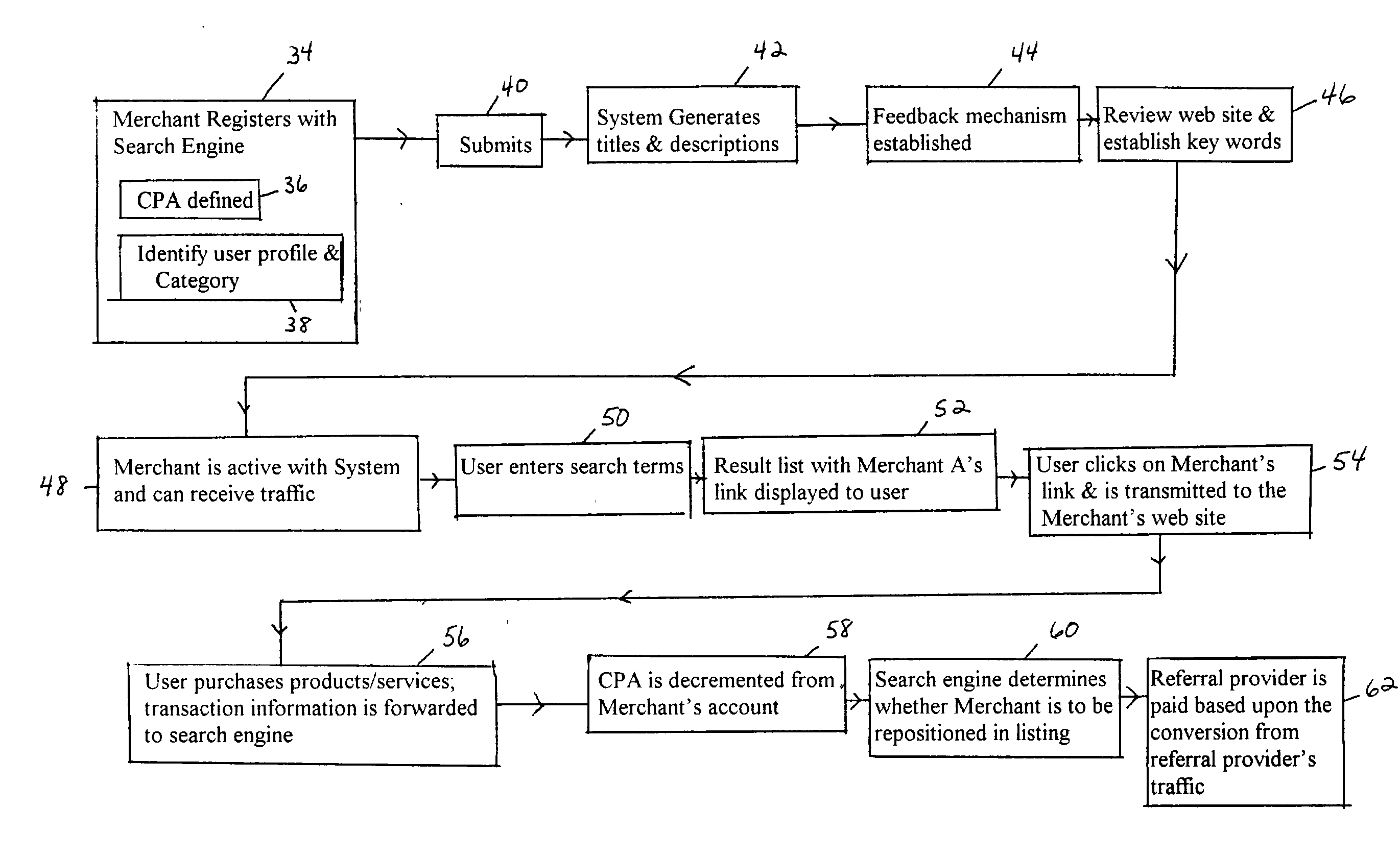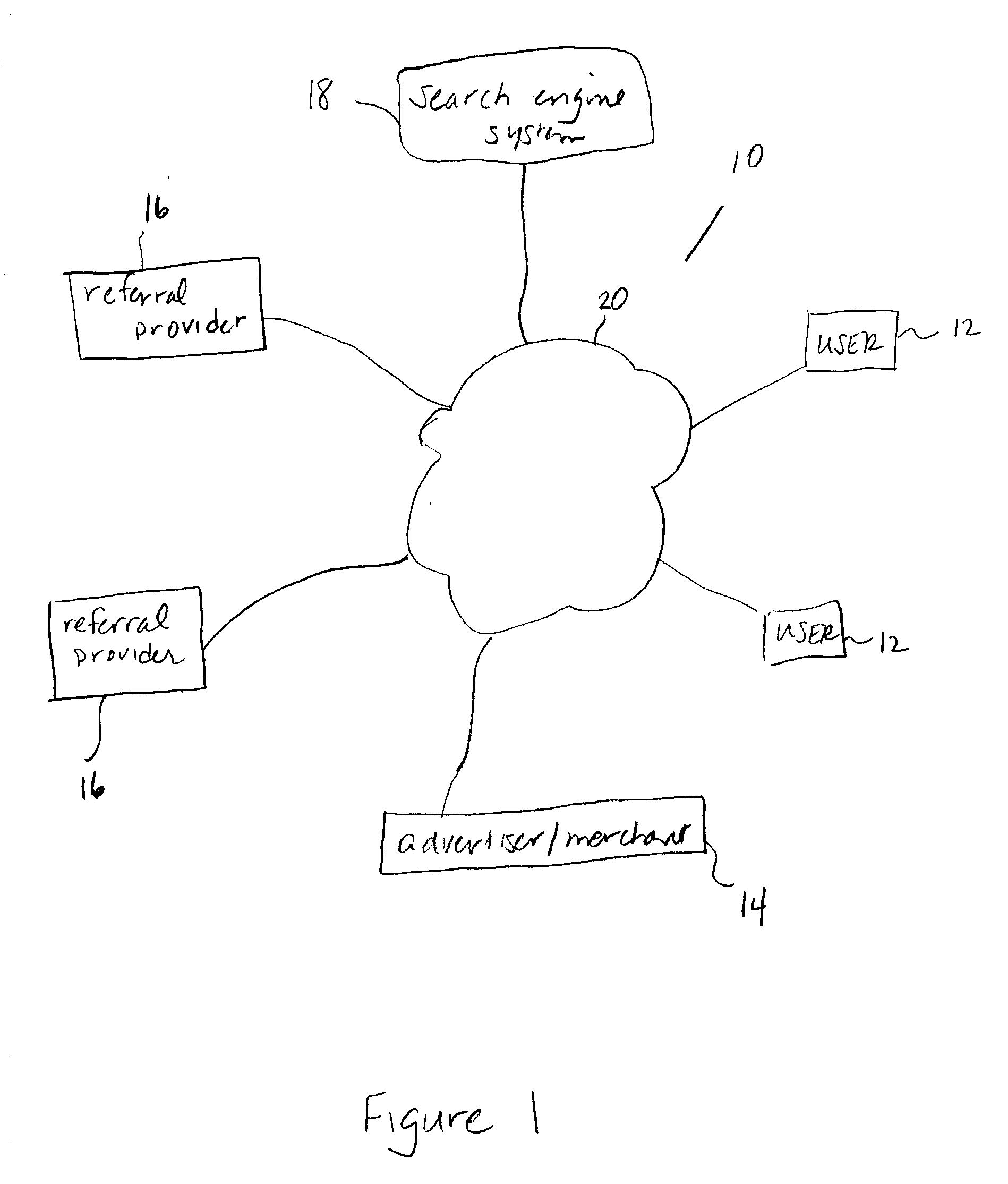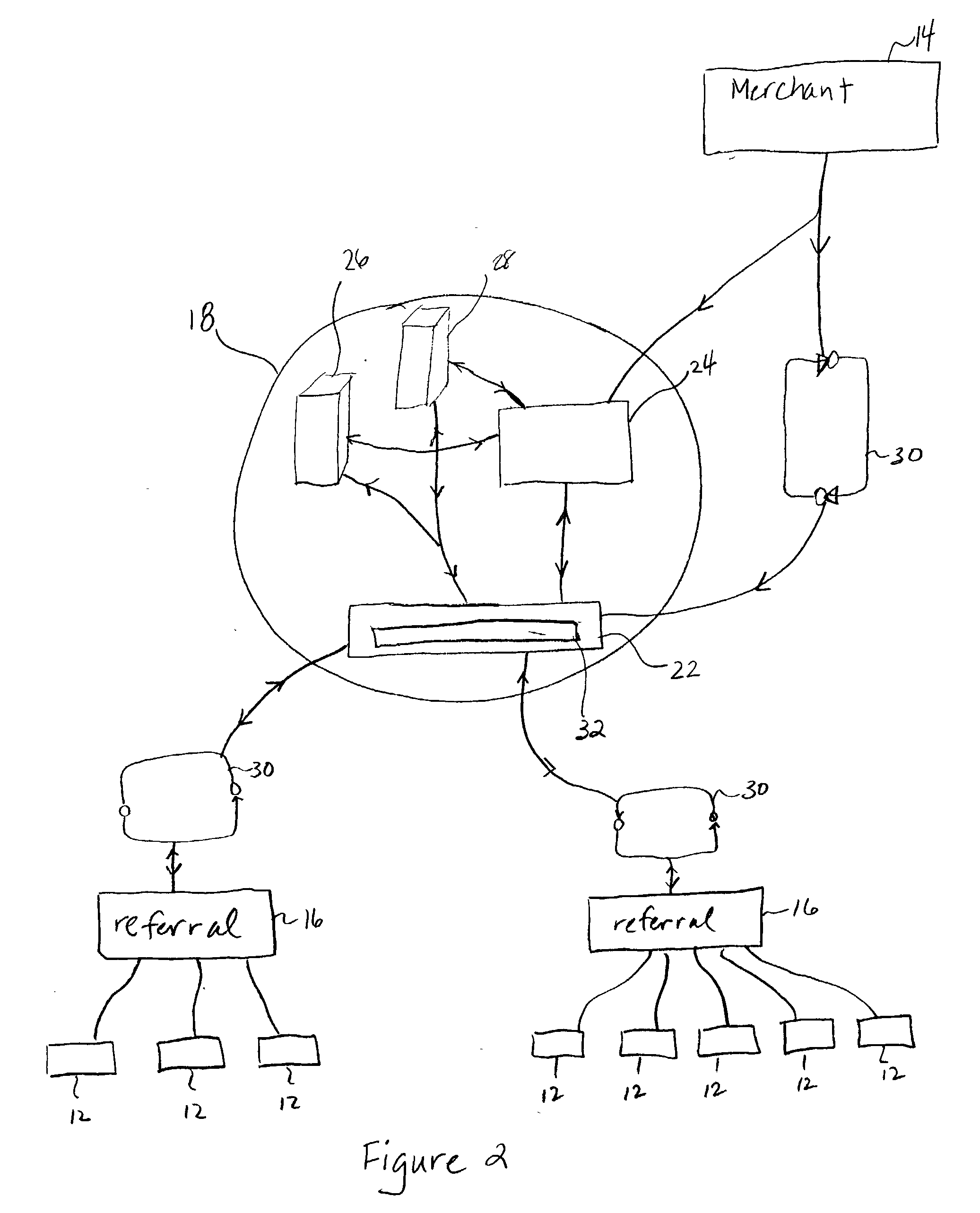Cost-per-action search engine system, method and apparatus
a search engine and cost-per-action technology, applied in the field of cost-per-action search engine system, method and apparatus, can solve the problems of search engine system that is algorithmically based, simple advertisements may not be seen or ever encountered by a user, and the traditional way of global computer networks results in minimal benefit, so as to improve the relevancy of listings, free advertisers, and constant maintenance of bids
- Summary
- Abstract
- Description
- Claims
- Application Information
AI Technical Summary
Benefits of technology
Problems solved by technology
Method used
Image
Examples
Embodiment Construction
[0027] Embodiments of the present invention are directed to a search engine system, method and apparatus that is configured to assess and place an advertiser's link in an optimal position on a search results list, in some instances on a distribution partner-by-distribution partner basis, wherein the determination of the ranking on the search results list is based upon a multiplicity of variables. With reference to FIG. 1, preferred embodiments of the instant invention operate with a network comprising a plurality of networked computers which are coupled together in a communications network, such as, for example, the Internet or the Web. FIG. 1 depicts a simplified representation of an example network system 10 that is operated in accordance with preferred embodiments of the invention.
[0028] Hardware Environment:
[0029] In the illustrated embodiment, the network system 10 includes at least two client or user computers 12, at least one advertiser computer 14, at least one distribution ...
PUM
 Login to View More
Login to View More Abstract
Description
Claims
Application Information
 Login to View More
Login to View More - R&D
- Intellectual Property
- Life Sciences
- Materials
- Tech Scout
- Unparalleled Data Quality
- Higher Quality Content
- 60% Fewer Hallucinations
Browse by: Latest US Patents, China's latest patents, Technical Efficacy Thesaurus, Application Domain, Technology Topic, Popular Technical Reports.
© 2025 PatSnap. All rights reserved.Legal|Privacy policy|Modern Slavery Act Transparency Statement|Sitemap|About US| Contact US: help@patsnap.com



